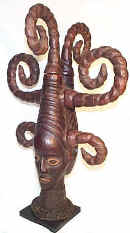 |
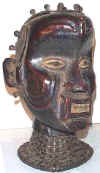 |
|||
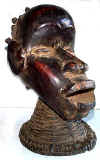 |
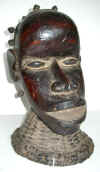 |
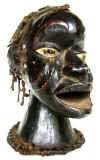 |
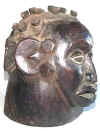 |
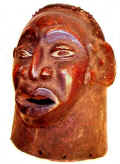 |
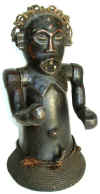 |
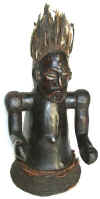 |
TRIBAL AFRICAN ART
EJAGHAM (EKOI)
Nigeria and Cameroon
In the
Cross River region in southeast Nigeria, and over into Cameroon, several ethnicities are
found and among them the Ejaghem. The oldest Cross River secret society may be the
all-male Ngbe society of the Ejagham people. In their language ngbe means
“leopard.” The cult of the leopard had a unifying effect on the scattered
communities of the Cross River. Commercial, ritual, and social exchanges took place
because of it, thus circumventing the drawbacks involved with a non-centralized regime and
political institutions that often did not extend beyond the framework of the village.
With the exception of forest cleaning, Ejagham farm labor traditionally was done by women. The men were free to concentrate on hunting and the arts of war. It also meant that men had leisure for the elaboration of art. They combined a love of physical combat and physical self-realization in hunting with a love of artistic fulfillment. Both women and men wove raffia cloth on upright looms; both women and men devoted loving care to the elaboration of coiffure, body paint, and dress.
The
Ekoi-speaking peoples (Anyang, Boki, Ejagham, Keaka, and Yako) are best known for their
large, skin-covered masks, which may have one, two or even three faces, and for their
smaller headpieces, which represent a head or an entire figure. The heads and skin-covered
helmet-masks are unique in Africa. Earlier skins of slaves, later skins of antelopes, were
used. The elaborate trading network along the river formerly involved the selling of
rights to Ngbe and other associations, including the right to perform their various
masquerades. The group selling the rights would perform the masquerade in the village of
the buyer group, then return home, leaving their masks and costumes behind. The river
trade thus helped to spread related art events and art objects among diverse people over a
broad area, though changes in both form and meaning took place as local copies of masks
and costumes were made. Masks of secret societies appear in performances by accomplished
dancers at funerals, initiations of new members, agricultural and other events. Two types
of masks dominate: helmet masks and crest masks. The helmet mask covers the entire head of
the wearer reaching to the shoulders. When the mask is made fresh animal skin is stretched
and tacked over the soft wood from which it is carved. After the skin dried, it was
stained with pigments made from leaves and bark. Crest masks do not cover the head but
rather sit on top of it. They are attached to the basketry cap, which is held on the
wearer’s head. The headpieces and masks often have metal teeth, inlaid eyes, and
frequently pegs to represent hair, which, alternatively, may be carved in elaborate coils.
Feathers, quills, and other objects would have ornamented the mask in performance. Human
hair went into the hairdo. It is presumed that all masks represented ancestors. In
addition to masks that represent human heads, there are also those that represent skulls
and animals. All of these animal masks and grotesque masks are seen as fierce and
frightening. The skin covering of a mask served as a magical agent to invoke ancestral
spirits, thus eroding the barrier between living and dead participants in communal
rituals.
In the northern Ejagham area, around Ikom, are found large stones, akwanshi, from one to six feet high, carved in low relief to represent human figures. They are thought to be no earlier than the 16th century.